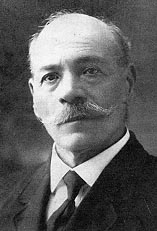The Early Years: 1860's ~ 1920's
Origins
In the year 1879, the first Portuguese arrived in Hawaii. Included among the many things they brought from their native land was a small stringed instrument called the Portuguese Braga, sometimes also referred to as a Braguiñha.
 In that same year, a ship named the "Ravenscrag" arrived in Hawaii from Portugal. The ship carried about 400 men, women and children from Madeira, an island off the coast of Portugal. In that first group of first arrivals were three musical instrument makers, Augusto Diaz, Manuel Nunes (pictured at left), and José do Espirito Santo.
In that same year, a ship named the "Ravenscrag" arrived in Hawaii from Portugal. The ship carried about 400 men, women and children from Madeira, an island off the coast of Portugal. In that first group of first arrivals were three musical instrument makers, Augusto Diaz, Manuel Nunes (pictured at left), and José do Espirito Santo.
Each one of these men has been credited, at one time or another, with taking the braguiñha and modifying it into the instrument we know today as the 'ukulele. The instrument has now become as much of the Hawaiian culture as the pineapple.
Also on board the "Ravenscrag" was a musician named Joaõ Fernandez. One popular belief is that when the ship arrived in Honolulu harbour, Fernandez jumped onto the wharf and began singing and strumming lively Portuguese folk songs. The Hawaiian people were noticeably moved by the performance and were immediately taken by the small stringed instrument he was playing.
How did the 'ukulele get its name? According to a pamphlet at the Bishop Museum:
"The instrument was heard one day by Edward Purvis, a British army officer who was Vice-Chamberlain of King Kalakaua's court. He was delighted with the size and the sound and asked to be taught, and soon he was playing for various court functions.
Because of Mr. Purvis' small build and his lively antics while performing on the instrument. he was compared to a jumping flea. The Hawaiians, fond of nicknames, called him "ukulele". (Uku meaning flea, and Lele meaning jumping). The instrument was an instant success and even King Kalakaua learned to play it."
more ....
